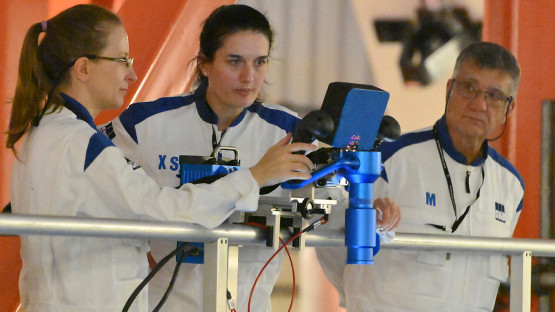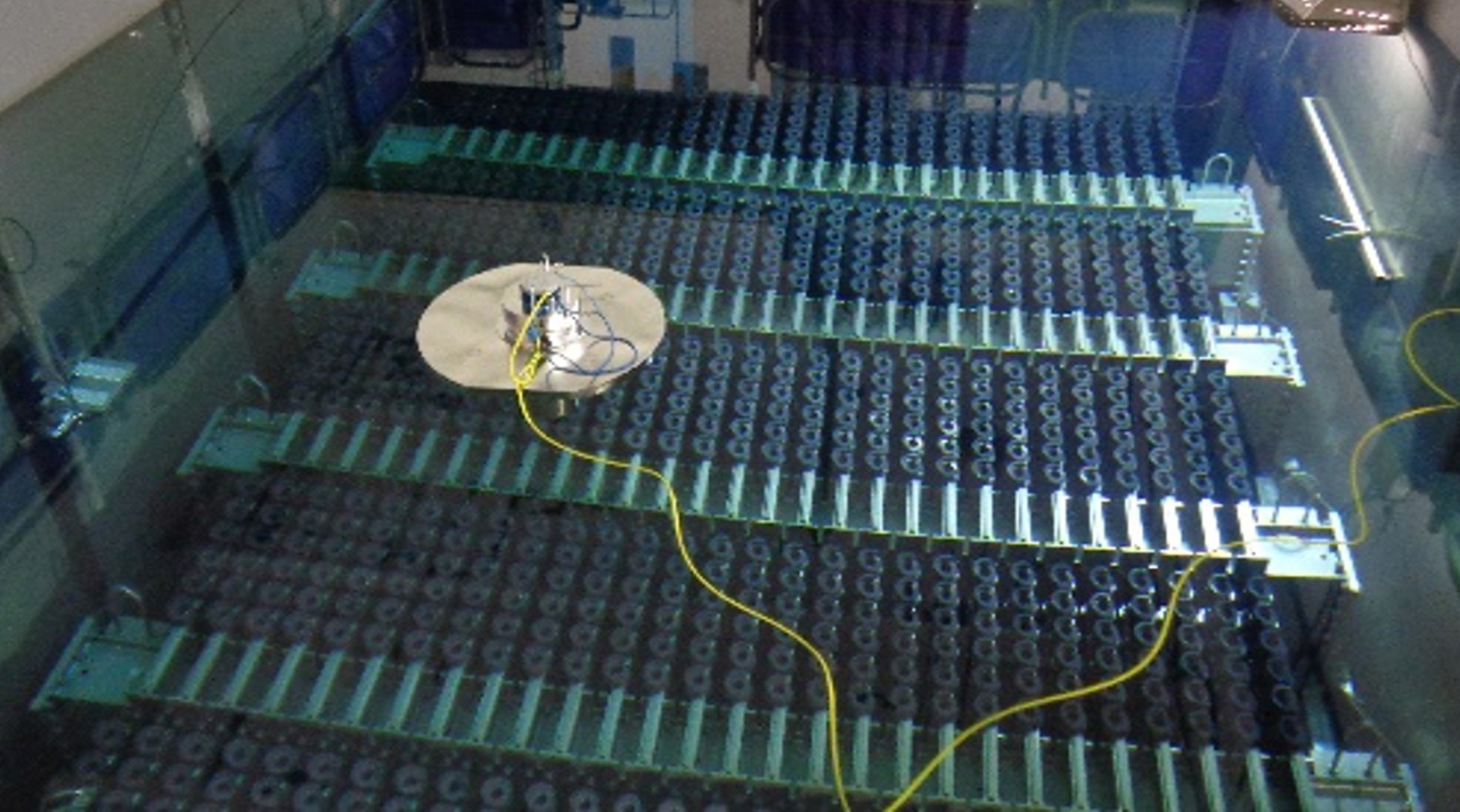
If you would like to learn more about the IAEA’s work, sign up for our weekly updates containing our most important news, multimedia and more.
The Evolution of Safeguards Technology
Jennifer Wagman, Teodor Nicula-Golovei

The next generation Cherenkov viewing device. (Photo: D. Calma/IAEA)
IAEA safeguards are based on information provided by States, inspections carried out by Agency safeguards inspectors and other safeguards relevant information. The tools used to collect and process this information continually evolve, stimulated by technical progress. For more than 60 years, international endeavours to develop these technologies have allowed nuclear safeguards inspectors and analysts to verify that nuclear material and technology remain in peaceful use.
“Artificial intelligence, robotics and advancements in radiation detection and satellite imagery are some of the technological developments that are already starting to impact the implementation of international safeguards,” said Carrie Mathews, Safeguards Outreach Coordination Officer at the IAEA. “Technology allows inspectors to make better use of their time in the field, focusing on the inspections rather than on compiling reports or doing other repetitive tasks.”
The following are some examples of technological developments, which can increase the effectiveness and efficiency of the IAEA’s safeguards implementation.
Satellite imagery
To implement safeguards, the IAEA collects and evaluates a range of safeguards relevant information to verify States’ non-proliferation obligations. This includes information gathered from open sources, such as commercial satellite imagery. “Commercial satellite imagery analysis complements information provided by States and has become an important asset for verifying a State’s declarations,” said Marc Lafitte, Head of the State Infrastructure Analysis Section at the IAEA. Analysis of satellite imagery is routinely used in the following safeguards activities:
• to verify the accuracy and completeness of information supplied by States;
• to aid the planning of in-field activities;
• to detect changes and monitor activities at nuclear fuel cycle-related sites; and
• to identify possible undeclared activities.
In recent years, satellite imagery analysis capabilities have significantly expanded. In addition to a growing number of Earth observation satellites delivering optical imagery, commercial imaging radars, new infrared sensors and satellite-based video have all enhanced the analytical process. These sources of imagery associated with new techniques allow analysts to provide an in-depth assessment of nuclear-related facilities to support the State evaluation process and fulfil the IAEA’s verification requirements more effectively.
Robotics

The robotized Cherenkov viewing device in testing at a spent nuclear fuel pond. (Photo: IAEA)
A Robotics Challenge was organized by the IAEA in 2019, leading to the development of the robotized Cherenkov viewing device (RCVD) — an automated surface vehicle used to verify spent nuclear fuel rods stored in spent fuel pools. In 2022, the IAEA announced the first successful field test of the RCVD. Once authorized for safeguards verification, this floating robot will be able to propel itself across the surface of a spent fuel pool and provide high-quality images of the Cherenkov glow generated by the spent fuel. The RCVD will reduce the time taken to verify spent nuclear fuel in spent fuel pools and will make it easier to verify areas that are more difficult to access.
“We hope that this solution is going to not only improve the accuracy of the measurements, but also increase the efficiency of the verification — for the IAEA and also for the nuclear facility operator,” said Dimitri Finker, Technology Foresight Specialist at the IAEA.
Artificial intelligence and machine learning
One of the latest examples of new technology utilized by the IAEA is learning-based algorithms, known as neural networks or more commonly referred to as artificial intelligence (AI) and machine learning (ML).
The use of AI and ML allows analysts and inspectors to focus on the highest value activities by automating routine processes, supporting human decision making and ensuring the quality and fidelity of data by identifying errors.
IAEA analysts review large quantities of data collected through multiple sources. One such source is video surveillance. In 2021, over 1300 surveillance cameras were maintained by the IAEA at nuclear facilities around the world. These cameras operate around the clock to provide continuity of knowledge of nuclear material and installations and allow safeguards inspectors to verify that there is no undeclared access to the material and no misuse of the facility. In most cases, multiple surveillance camera systems are in operation, producing a large amount of data that require review by inspectors. AI provides the basis for the next generation of surveillance review software that allows for the efficient analysis of these data.
Beyond surveillance data review, AI and ML can strengthen the collection, integration and analysis of multiple information sources. State-declared information about facility design and nuclear material accountancy, information collected during inspections, as well as safeguards relevant open source information can all be more efficiently analysed with the help of AI. It can also detect and respond to information security events. The IAEA uses commercially available tools that have AI integrated in them to cope with cyberthreats, equipment tampering, and for authentication and encryption of sensitive information.
Along with advancements in nuclear technology, safeguards techniques are continuously evolving. New developments lie on the horizon, and the IAEA is proactively exploring how innovative technologies can help in its verification mission.






